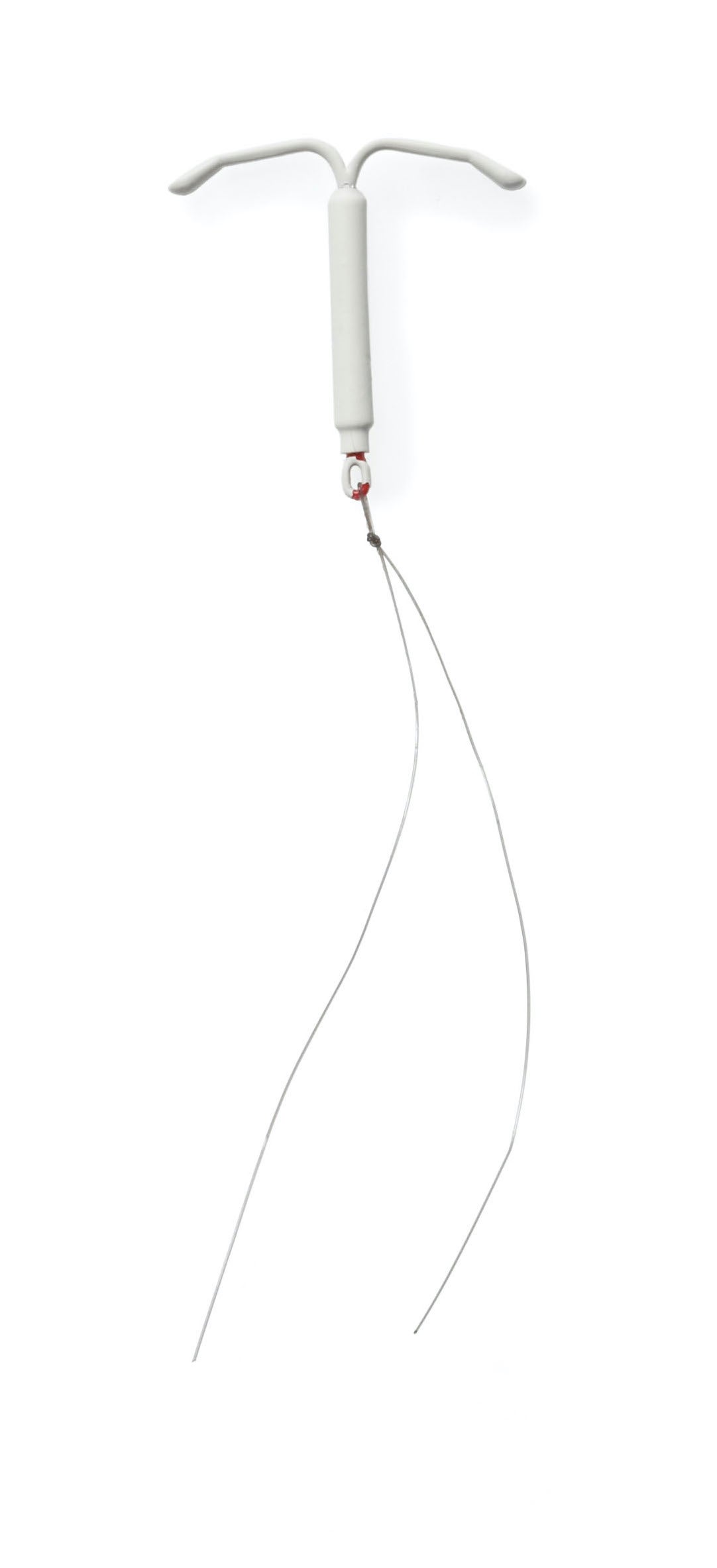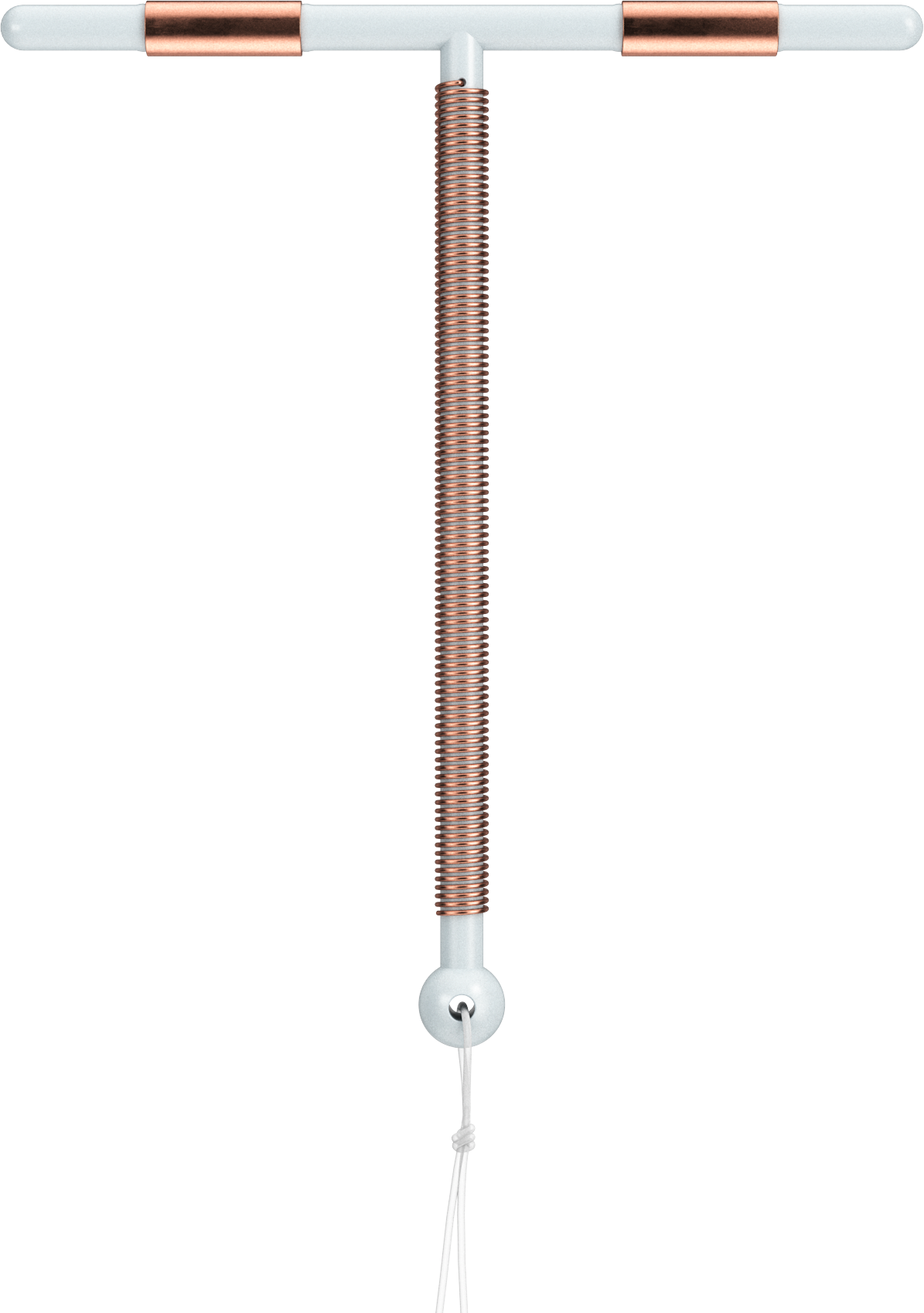IUD (Intrauterine Device)

Basic Info & FAQs
The IUD is a little, t-shaped piece of plastic that gets put in your uterus to mess with the way sperm can move and prevent them from fertilizing an egg. Sounds odd, but it works like a charm. IUDs offer years of protection—between three and twelve, depending on the type you get. And if you want to get pregnant, you can have the IUD removed at any time. In the U.S. there are five IUDs: Mirena, Paragard, Skyla, LILETTA, and Kyleena.

There are four hormonal IUDs available in the U.S.—Mirena, Skyla, LILETTA, and Kyleena. All four are made of plastic and release a small amount of the synthetic hormone progestin, which thickens your cervical mucus to keep sperm from reaching the uterus. Depending what kind you get, hormonal IUDs can last between 3 and 8 years and may make your periods lighter.


This is the most effective EC there is. Have a provider insert it within 5 days of a misstep and lower your chance of pregnancy by 99.9%.

Get it and forget it
If you’re a busy person who doesn’t want to worry about remembering birth control, the IUD just may be for you. Once it’s in, you’re good to go for anywhere from 3 to 12 years.
Hands free
No packages or prescriptions to pick up at the pharmacy, so there’s nothing that could get lost or forgotten.
Total privacy
No one can tell when you have an IUD. (Some partners say they can feel the strings, but no one else will know it’s there.) There’s no tell-tale packaging, and nothing you need to do just before you have sex.
Safe and sound
Most experts agree, if you’re healthy and have a uterus, you’re probably a good candidate for the IUD. That’s true even if you’re young, haven’t ever been pregnant, or haven’t had kids yet. It’s also a great method for new moms (even if you’re breastfeeding).
The pregnancy question
You should return to fertility (fancy way of saying you should go back to being able to get pregnant) very quickly after you have the IUD removed. Which is great if you want to have a baby. But if you’re not ready to get pregnant as soon as you have an IUD taken out, be sure to protect yourself with an alternate method.
Don’t take our word for it. Check out the videos above to hear people talk about their experiences with the IUD. And be sure to ask your health care provider which method is best for you.
What does it cost?
Thanks to the Affordable Care Act, if you have health insurance, chances are good that you’ll be able to get this method with no out-of-pocket cost. BTW, the open enrollment period for 2017 goes till January 31, 2017! Explore your insurance options at HealthCare.gov.
If you don’t have insurance or Medicaid, this method can be pricey up front. Still, the IUD can stay in place for years, so it becomes downright cheap over time.
Prices for Mirena*
- This method may be free or low-cost for you
- With Medicaid: Free
- With insurance: Free under most plans
- Without insurance: Depending on your income, you may be able to go to a low-cost clinic to get Mirena at reduced cost. Bayer, the company that makes the Mirena IUD, works with health care providers to supply a certain number of free IUDs to women who qualify. If you qualify, ask your health care provider to help you apply.
The full price of Mirena can range from $500 - $927. To see how this translates over a year, here’s what it would cost to pay for Mirena month-to-month at full price.
- Cost per month over one year: $41 - $77
- Cost per month over five years: $8 - $16
Prices for Paragard*
- This method may be free or low-cost for you
- With Medicaid: Free
- With insurance: Free under most plans
- Without insurance: Depending on your income, you may be able to go to a low-cost clinic to get Paragard at reduced cost.
The full price of Paragard can range from $500 - $932. To see how this translates over a year, here’s what it would cost to pay for Paragard month-to-month at full price.
- Cost per month over one year: $41 - $77
- Cost per month over five years: $8 - $15
-
Cost per month over 10 years: $4 - $7
-
Payment assistance: If you don’t have insurance, the manufacturer offers payment plans where you can make 4 or 12 monthly payments. Contact the manufacturer at Paragard.com or 1-877-727-2427 to find out more. Also, check with your local family planning clinics to find out if they offer free or low-cost IUDs (many do).
Prices for Skyla*
- This method may be free or low-cost for you
- With Medicaid: Free
- With insurance: Free under most plans
- Without insurance: Depending on your income, you may be able to go to a low-cost clinic to get it at reduced cost. Bayer, the company that makes the Skyla IUD, also has a program to offer a certain number of free IUDs to people who can’t afford one otherwise. (Note that you have to work with a health care provider to apply to the program.)
The full price of Skyla can range from $650 - $780. To see how this translates over a year, here’s what it would cost to pay for Skyla month-to-month at full price.
- Cost per month over one year: $54 - $65
- Cost per month over three years: $18 - $21
Prices for LILETTA*
- This method may be free or low-cost for you
- With Medicaid: Free
- With insurance: Free under most plans. If your plan has a high copay, you may qualify for copay assistance that reduces the cost of the device to $75.
- Without insurance: Depending on your income, you may be able to go to a low-cost clinic to get it at reduced cost or even for free.
The full price of LILETTA can range from $50-$750. There is also an out-of-pocket maximum of $75 with certain insurance plans. To see how this translates over a year, here’s what it would cost to pay for LILETTA month-to-month at full price.
- Cost per month over one year: $4 - $50
- Cost per month over three years: $1 - $17
*Note: Without insurance there may be an additional cost for your health care provider to insert or remove an IUD. The average cost for these visits is around $150 to $250, depending on the service. For those with insurance, insertion should always be covered, but removal might not always be covered.
How do I use it?
If you want to get an IUD, the first thing you’ll need to do is talk with your health care provider. She or he will ask you a bunch of questions about your medical history and your lifestyle, then give you an exam to make sure the IUD is right for you.
You can get the IUD inserted any time of the month. Some providers like to insert it during your period, but any time is fine as long as you can be sure you’re not pregnant. It may be the most comfortable to get it done during the middle of your period, if you can believe that. (That’s when your cervix—the opening to your uterus—is open the most.)
It’s pretty common to feel some cramps when you get an IUD inserted, but they’ll go away with rest or pain medication. Some women might feel dizzy, too. Once the IUD is in, you’ll notice a little string that hangs down into your vagina. That’s there so that the IUD can be removed later. (The strings don’t hang out of the vagina like a tampon, though.)
After it’s in, there’s really not much you have to do other than check the string ends from time to time to make sure it’s in place. Here’s how:
- Wash your hands, then sit or squat down.
- Put your finger in your vagina until you touch your cervix, which will feel firm and rubbery like the tip of your nose.
- Feel for the strings. If you find them, congrats! Your IUD is good to go. But if you feel the hard part of the IUD against your cervix, you may need to have it adjusted or replaced by your provider.
p.s. Don’t tug on the strings! If you do, the IUD could move out of place.
p.p.s. If you don’t feel comfortable checking for the strings, you can let your provider do that the month after insertion, and then yearly after that.
The good & the bad
Positive “side effects”? You bet. There are actually lots of things about birth control that are good for your body as well as your sex life.
- Easy to use
- Doesn’t interrupt the heat of the moment
- Super long-lasting protection without much effort
- Safe for smokers and those with hypertension and diabetes
- The Paragard brand of IUD doesn’t change your hormone levels
- The progestin IUDs may reduce cramps and make your period lighter. (Some women’s periods stop completely.)
- You can use it while you’re breastfeeding
Everyone worries about negative side effects, but for many women, they’re not a problem. Most women adjust to having an IUD pretty quickly, but give yourself time. It could take a few months.
The most common complaints:
- Spotting between periods (especially during the first few months after you get an IUD)
- Increased period flow (for users of the Paragard brand)
- Cramps and backaches
Other stuff to watch out for:
- IUD slipping out
- Infection
- IUD pushing through the wall of the uterus
If you still feel uncomfortable after three months, switch methods and stay protected. You’re worth it.
*For a very small number of women there are risks of serious side effects.

